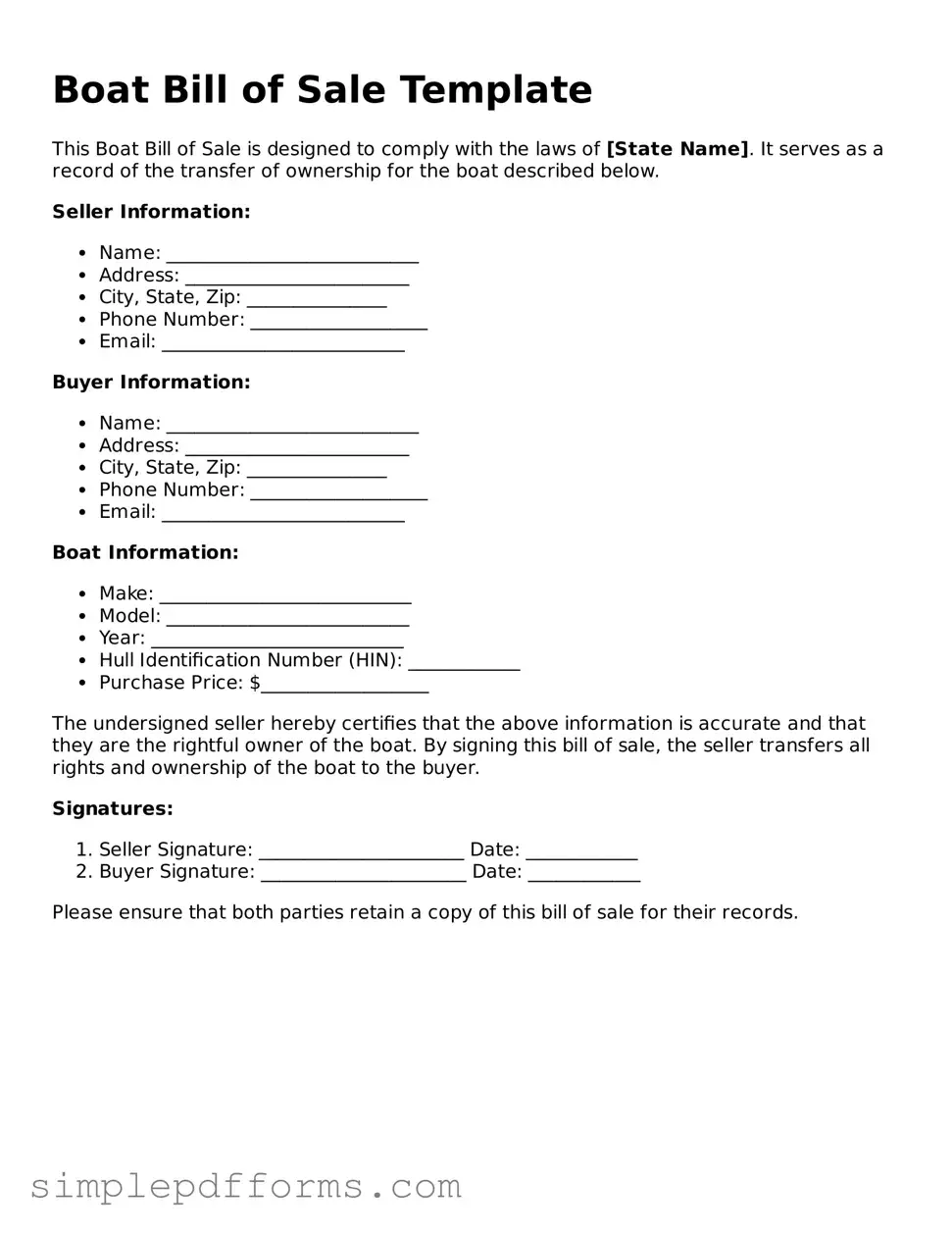Filling out a Boat Bill of Sale form can seem straightforward, but many people make common mistakes that can lead to problems down the line. One frequent error is not including all necessary details about the boat. Essential information such as the make, model, year, and hull identification number (HIN) should be clearly listed. Omitting any of these can create confusion and may affect the registration process.
Another mistake is failing to accurately describe the condition of the boat. Buyers want to know what they are getting. If the seller describes the boat as "like new" when it has significant wear and tear, this can lead to disputes. Being honest about the condition protects both parties and establishes trust.
People often overlook the importance of including both parties' names and contact information. The seller and buyer should both be clearly identified on the form. If this information is missing or incorrect, it can complicate ownership transfer and future communication.
Additionally, many forget to include the sale price. This is a crucial detail that serves as a record of the transaction. Not stating the price can lead to misunderstandings later, especially if questions arise about taxes or ownership rights.
Some individuals neglect to sign the form. A signature is a vital part of any bill of sale, as it indicates that both parties agree to the terms outlined. Without a signature, the document may not hold up in legal situations.
Another common error is not dating the form. A date is essential to establish when the sale took place. This information can be important for tax purposes and for the buyer’s future registration of the boat.
People sometimes make the mistake of not keeping a copy of the completed Bill of Sale. Having a copy for personal records is important. It can serve as proof of the transaction and help resolve any future disputes.
Finally, many individuals do not check their state’s specific requirements for a Boat Bill of Sale. Each state may have different rules regarding what needs to be included or how the form should be filled out. Ignoring these regulations can lead to issues with registration and ownership.
